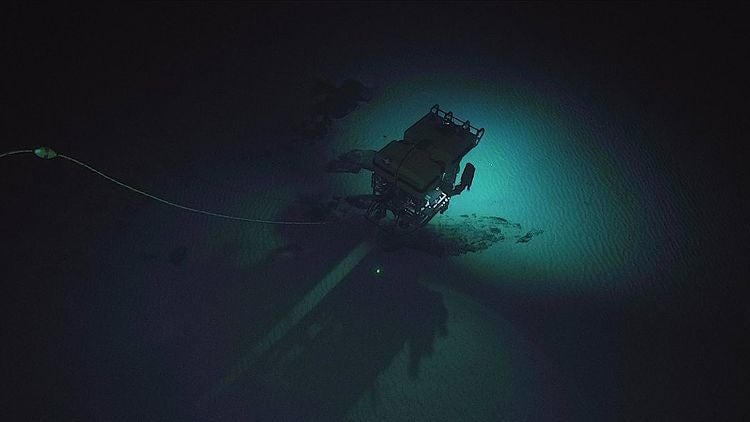
Raman – Deploying InVADER
Leonardo Macelloni (USM), Adam Soule (URI),
Pablo Sobron (Impossible Sensing), and Mark Leung (BOEM)
Photo by Ocean Exploration Trust
Overview
This project seeks to conduct the first at-sea tests of a novel subsea Raman spectrometer that will provide high-fidelity, quantitative chemical composition data on materials including rocks, sediments, fluids, and biological samples in situ. The instrument, named InVADER, was developed by Impossible Sensing with funding from NASA. We will continue working with Impossible Sensing, who are co-supporting the development of this instrument through the use of their facilities for testing. It was designed as a prototype for measuring the chemical composition of materials during space missions to explore solar system planets but is equally (if not more) valuable as a tool for ocean exploration on our own planet.
Additional efforts funded by BOEM will develop base prediction models for quantitative spectroscopy. In practice, we will scale up micro-scale mapping technologies and quantitative models that we currently use to determine sample homogeneity and micro-scale features to the kilometer scale needed to explore the seafloor. This involves developing low-error interpolation and up-sampling techniques as well as expanding database systems to store geolocated raw, processed and analyzed spectra. Developing a georeferenced database is not only key to post-processing but also to creating updated mineral maps and predictions in near real-time. We will do this by geolocating compositional information from Hercules. To do this, we will develop autoencoders based on machine learning that feature deep neural networks to up-sample low-resolution data.
Could link this -> https://www.impossiblesensing.com/post/impossible-sensing-brings-high-tech-laser-lab-to-the-ocean-floor

